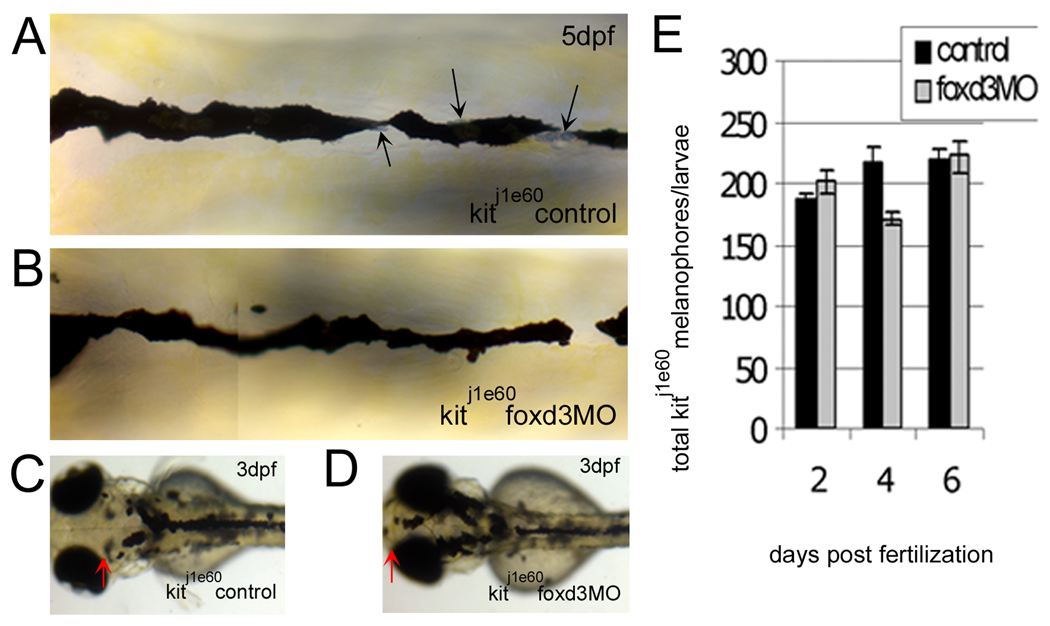Fig. 5.
The increase in kit mutant melanophores with foxd3 loss-of-function is not due to transfating of other foxd3 dependent cell types. A-D) kitj1e60 melanophore migration mutants were injected (or left uninjected; control) with foxd3 MO (foxd3MO), imaged at 3 (C, D) and 5dpf (A, B) and fixed at 2, 4 and 6 dpf for melanophore quantification. A) Melanophores localized to the anterior dorsal trunk display relatively normal, non-apoptotic morphology. Black arrows indicate silver pigment cells, iridophores. B) In kitj1e60 foxd3 morphants, foxd3 dependent iridophores are gone indicating MO function (average control and morphant iridophores ± standard deviation at 4dpf are 52±3 and 18±14, respectively), yet melanophore morphology and number remain similar to uninjected controls. C) kitj1e60 control melanophores do not localize to the anterior most portion of the head, indicating a migration defect. D) The presence of melanophores over the head is partially rescued with foxd3 loss-of-function (red arrows indicate anterior extent of melanophores). E) kitj1e60 melanophores are not significantly increased with foxd3 loss-of-function at 2, 4 and 6 dpf (p=0.31 by 2-way ANOVA; 8–15 fish per time point).

